Sat 25 Dec 2021
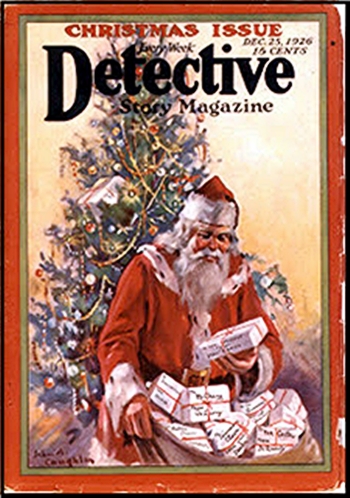
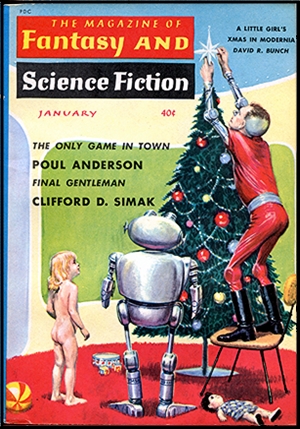

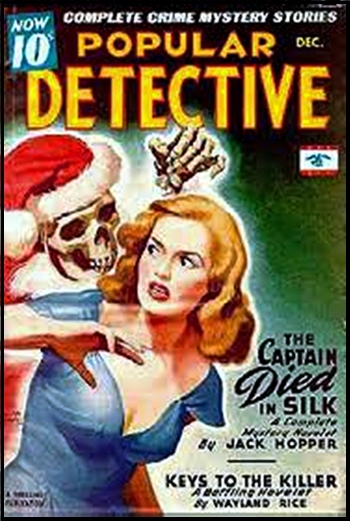
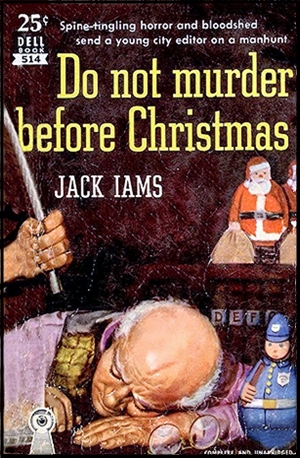
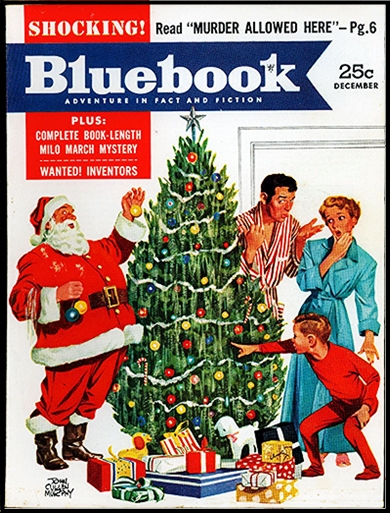
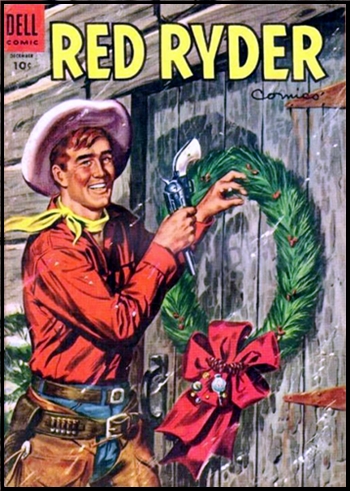
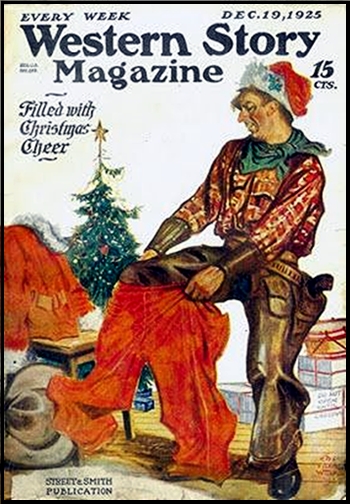
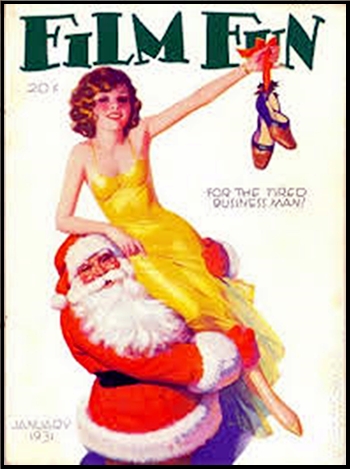
Sat 25 Dec 2021









Wed 27 Oct 2021
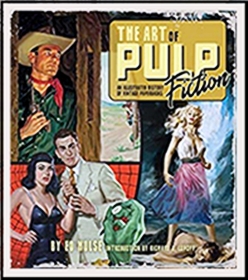
ED HULSE – The Art of Pulp Fiction. IDW Publishing, hardcover, September 2021.
As I was reading this excellent illustrated history of vintage paperbacks, it slowly dawned on me that I have actually been collecting paperbacks longer than digest or pulp magazines! This is amazing to me because I’ve been at the fiction magazine game for 65 years, which is a long time to be collecting pulps and digests (I started in February 1956 with Galaxy).
But I started buying paperbacks off the stands even earlier, in 1954. I still remember being absolutely stunned and falling in love with the risque and sexy covers by James Avati. The Signet paperback covers for the Erskine Caldwell novels grabbed hold of me and made me a book collector for life. How many times did the owner of Hoscheck’s Deli ask me “Hey are you going to buy that book?” as I gazed stricken at the James Avati girls. I was only 12 and back then the covers and novels were not considered suitable reading for a young boy.
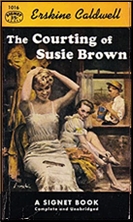
Now of course such covers are routine, but James Avati got me off and running on a lifetime of paperback collecting and I’m still at it. Over the years, many collectors wondered which is the best book on the paperbacks? Prior to 2001 there were several books that were interesting but it was hard to pick one out as the most comprehensive. Then in 2001 The Great American Paperback by Richard A. Lupoff was published and for 20 years it has been the best illustrated history of vintage paperbacks.
Now in 2021 we have Ed Hulse’s book The Art of Pulp Fiction, and in my opinion it is now the best illustrated history of vintage paperbacks. True the Lupoff book is a bigger book at 320 pages and 600 cover photos. Plus it also rates the 600 paperbacks as to collectibility based on a rating scale ranging from one to five book icons. The higher the number of book icons, the more collectible the item.
But 20 years is a long time and in my opinion we needed a new updated illustrated history, and I think The Art of Pulp Fiction is that book. One big disadvantage of the Lupoff book is that the essays and the paperback captions are on yellow, blue, or red paper. It was annoying and difficult to read 20 years ago and it is even more annoying now that my eyesight is 20 years older and aging. Ed Hulse’s book is mainly on white or black paper but even the white print on black background is a lot better than yellow, blue, or red paper.

Ed and I have talked about the title of the book. Four years ago in 2017 The Art of the Pulps was published and I think some readers will assume that The Art of Pulp Fiction is a reprint of the earlier book and that they have it already. But they are in fact two different books. The 2017 book is an illustrated history of pulp magazines and this 2021 book is an illustrated history of vintage paperbacks. I’m sure Ed did not want this title, but I think the publisher insisted on it and only agreed to put a small sub title on the cover saying “An illustrated history of vintage paperbacks.”
What exactly is in The Art of Pulp Fiction? The book is 10 by 11 inches, 240 pages, 450 cover photos, and essays on the different genres. It also has short essays by Gary Lovisi (paperback collector and publisher of The Paperback Parade), Will Murray (author and expert on hero pulps), and David Saunders (artist and expert on original pulp art). Each cover photo has an approximately 50 word discussion of the cover. Every cover is large enough to see the details with no thumbsize, small covers. There also are several photos of original paperback cover art from the collections of art collectors.
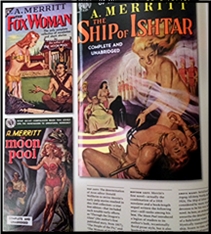
One mistake I think the publisher made was to have the front and back cover edges look worn and ragged. The first impression is that the copy of the book is sort of beat up and perhaps defective. But it’s not, and in fact is quite a good looking book overall. Ed not only discusses many of the influential paperbacks but he also discusses the artists and the publishers.
Many collectors contributed to this book by lending paperbacks to Ed. Also he visited several art collectors. His visit to my house can serve as an example of his methods in borrowing so many books. One afternoon several months ago, he visited me and we went through the rooms discussing and looking at my paperback collection. We started on the second floor in the room that my wife and kids call “The Paperback Room”. The entire room is devoted to detective and mystery paperbacks including what may be a complete set of the hundreds of Dell mapbacks. Also in the room is some original cover art and several paperback racks which took me decades to find. These wooden racks were made to hold paperbacks for sale and were usually destroyed or lost over the years.
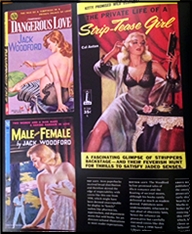
We then went to my basement where we looked and talked about my science fiction, western, and mainstream paperbacks. Ed ended up borrowing two boxes full of paperbacks, perhaps 75 to 100, of which close to 50 may have been used in the book. By the way, I noticed one paperback lacked the 50 words of comment. If there is a reprint or revised edition in the future. page 116 needs comments for Poul Anderson’s Brain Wave.
This book gets my highest recommendation and can be obtained from Ed’s Murania Press website or from amazon.com. Price is $50.00 and worth every penny. If you read, collect, or just like paperbacks, this is a must buy.
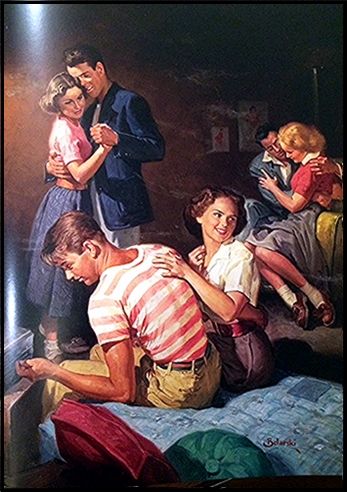
Sun 25 Oct 2020
I have good news to report. Bill Pronzini has just informed me that after many years of collecting, he has finally found a copy of the last Phoenix Press hardcover mystery in jacket that he’s needed to complete the entire run.
The one book that has eluded him for so long is Tread Gently, Death, by Robert Portner Koehler. It probably has no intrinsic value other than it’s so rare. As a milestone in collecting history, that’s another matter altogether.
The cover is shown below. For covers of the complete run, go here:
http://www.lendinglibmystery.com/Phoenix/1936-39.html
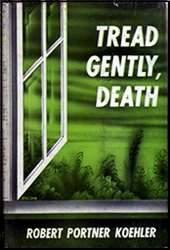
Tue 3 Apr 2018
This is the third and last column on one of my favorite subjects: Pulp Art. The two prior installments may be read on Mystery*File as Part 19 and Part 20.
Often I’m asked where can a collector buy pulp or paperback art? eBay is certainly a source and I have often typed in an artist’s name and looked to see what is available. Or I’ve tried different combinations of words on eBay such as Original Pulp Art, Cover Paintings, Paperback Paintings, etc. Another source that I’ve used are the auction houses such as Heritage Auctions. Or you can visit another art collector. They often have pieces that they would be willing to trade or sell. For instance I’ve bought art from such well known collectors as Bob Lesser, Doug Ellis, and Bob Weinberg. At the recent pulp brunch at my house in November, I bought several Bjorklund drawings from WILD WEST WEEKLY from art collector and dealer, Paul Herman. As I mentioned earlier, Matt Moring and I completed a trade involving 4 pulp paintings at the brunch.
But one of the best sources for original art are the pulp conventions: Windy City in Chicago, PulpFest in Pittsburgh, and Pulp Adventurecon in Bordentown, NJ. Of the three shows I consider Windy City to be the best source for original pulp and paperback art. The convention lasts three days each year and there are perhaps as many as a dozen dealers with art for sale. Next, comes Pulpfest with two main art dealers: Doug Ellis and Craig Poole. Sometimes other book dealers bring in art: Nick Certo, Scott Hartshorn, Mark Hickman, Ray Walsh, etc. Pulp Adventurecon is usually about the books and magazines but this year Craig Poole had several tables with excellent pulp, digest, paperback and slick art. Prices range from a few hundred dollars to several thousand.
Frankly, I collect art because I love collecting but if you are thinking of possible investment value, you can’t go wrong with original art as an investment. Of course I’m assuming you pick nice pieces and not poor art. For instance I have a painting from DETECTIVE FICTION WEEKLY that is just a bloody hand. Another from the same magazine, is just the face of some ugly criminal. It’s possible these paintings will never be worth anything except for a few hundred dollars, but since I collect pulp magazines, I was happy to buy them as examples of the poor cover art occasionally used by the magazines.
As you may have noticed I have no problem with buying unframed art, art in poor condition, even art with holes in the canvas. I used to frame everything, but now I say the hell with it and hang them up as is. If a piece is falling apart, I have restored it, however. There are art restorers that work on paintings, in fact Matt Moring and I met a restorer at the Bordentown convention and he has emailed us several photos of excellent pulp art that he has worked on.
An important thing to remember is to be sure and collect original art that you like. If you like SF, there is plenty out there. Hero pulp art is very popular but quite expensive. Same thing with risque or spicy art such as pinup art. Detective and mystery art has increased in value during the past few years. I can remember when you couldn’t get much of anything for a detective pulp painting. Western art still remains fairly inexpensive except for the big names like Nick Eggenhofer or Gayle Hoskins.
Many collectors make the mistake of ignoring western art which is a big mistake. The cover paintings are full of action, very colorful, and inexpensive compared to SF, hero and detective pulp paintings. So far there is practically no interest in love or sport cover paintings. Not many collectors are interested in the love or sport magazines either. As a result we don’t see many covers at all from these two genres. It’s possible they have mostly been lost or destroyed due to this lack of interest.
Here are some great examples of inexpensive pulp art. Most collectors don’t seem that interested in preliminary art but they can be quite stunning as these pieces show. Often such prelim work is very sketchy or not that well done but these two pieces by Delano and Baumhofer are almost finished enough to appear as covers. The two magazines show how the finished cover paintings turned out and you can see there is not a lot of difference between the preliminary work and the finished canvas. The Baumhofer one showing the cowboy on the ground is especially impressive as a preliminary sketch.
Now here is an example of a preliminary by De Soto that is very sketchy and unfinished. There is no way this Spider prelim could be used as a cover as is. But it does give the editor an idea of what the artist planned to do with the large painting on canvas. As far as I know this sketch was never made into a finished painting. By the way, I have two SPIDER preliminaries and they are quite rare. Only a couple of the cover paintings are known to exist.
This is one of the earliest cover paintings that I have. It’s from 1914 and the artist is Howard Hastings. He painted a lot for OUTDOOR LIFE and that type of magazine so maybe it is from a slick. I bought this from art dealer Steve Kennedy in 1989 for $700. During this period I could spend about $700 each month on art and much later Steve told me that my $700 each month was a life saver for his business at the time. He had just started to deal in pulp cover paintings, and no one except for me was buying from him. Too bad I couldn’t spend more than $700 each month because I lost out on some nice art that Steve sold later to other collectors.
I got this one from Pulpcon in the eighties for only a couple hundred. I wonder how it got that hole in it? It’s FIFTEEN WESTERN TALES.
This is one of my very favorite illustrations. It’s a great Nick Eggenhofer interior, probably for a two page spread. It shows two stage coaches passing each other and one looks ready to tip over. By the way, I haven’t located where this is from in case anyone can help me out. It may be WESTERN STORY or one of the western titles published by Popular Publications like DIME WESTERN or STAR WESTERN.
This is PEOPLES from the early 1920’s and the artist is Wittmack. This is another painting I got from Kennedy when he was selling me one painting a month back in 1989. I never bothered to get it framed. Frankly I find that framing sometimes detracts from the painting. Steve liked to frame his paintings in a gold frame which I did not like much. And of course Bob Lesser habit of framing the pulp magazine inside with the painting, I found to be sacrilege and very annoying! But despite my many complaints over the years Bob continues this practice. As far as I know there is no museum, art gallery or art restorer that would frame the magazine under glass with the painting. After a few decades you would have a pile of pulp chips and a stain on the canvas.
I love when I get this type of painting. It’s by Norman Saunders and was used on a pulp AND a paperback years later. It was first used on WESTERN ACES magazine in the 1940’s and then reused on the Ace Double titled GUNSMOKE GOLD in the 1950’s. One funny story about me buying this art. When I first saw it the dealer wanted $200 for it as a paperback cover. I stupidly looked closely and muttered that it was signed by Saunders and bang, the price went up right away to $400. Later I discovered it was also a pulp and this makes it worth far more than the $400 I had to pay.
– Whatever happened to art dealer Tony Dispoto? I bought this from him and it’s a great piece by one of the best of the pulp artists. It’s a Flanagan from BLUE BOOK in the mid-1930’s illustrating a great adventure serial by James Francis Dwyer.
This is a rare example of Walter Baumhofer’s early work. It’s from ADVENTURE in the mid-twenties and I got it at Windy City for only a couple hundred dollars.
FIGHT STORIES by Gross. A pulp collecting brain surgeon was once visiting me and was interested in this because boxers often require such surgery.
I love showing this painting to visitors. It’s 10 STORY WESTERN by De Soto and has over 20 pinholes punched through the canvas. In other words someone used it as a dart board! I’ll never get it restored because it shows just how little respect these paintings used to command back in the day. I’ve heard so many horror stories of cover paintings thrown away, lost, burnt, etc. Back when they were painted they were just about considered worthless.
Author Ryerson Johnson once told me that he was an editor for a couple years for Popular Publications back in the forties. When he resigned to return to full time writing, he was shown into a large room full of paintings and illustrations and told to take what he wanted because it was all going to be thrown away eventually. He took several paintings and a couple large stacks of interior illustrations. Decades later he sold this art to me and other collectors.
When I first bought this ADVENTURE cover, it was on a board that was spongy and soft. You could take off pieces of the board with two fingers. I thought it was just about worthless and ready for the garbage. But art restorers can do magical things and this painting was saved. It was somehow transferred to another board without any damage.
This is another strange story. Collector Al Tonik had the paperback to this cover and decided to commission artist Rudi Nappi to paint it again as a recreation of the original painting. The artist did the recreation which is almost an exact copy for $100. But then later on I discovered the original paperback cover painting. So Al sold me the recreation to go along with the original cover painting. I now have both paintings, the original which was done in the 1950’s and the recreation which was done in the 1990’s or thereabout. Sometimes we think these old paintings are lost but they show up anyway!
This is from BATTLE STORIES and I bought it from Illustration House in NYC. Notice how the magazine reversed the image. They did this sometimes to make room for the magazine title or cover blurbs.
This is by the great Frank Paul and is from FAMOUS FANTASTIC MYSTERIES, one of my favorite magazines.
This is FIGHTING ACES by Blakeslee. I got it from Bob Weinberg back in the 1980’s. He was just released from the hospital and needed money to pay his medical bills. He had over a dozen of these aviation paintings which he sold but I only bought two of them. I guess I was broke again!
I also collect advertising posters which are pulp related. This is a poster advertising Street & Smith’s DETECTIVE STORY MAGAZINE.
I have several paperback racks which I spent decades searching for. This is the first one I found and I had to trade a Clark Ashton Smith first edition to get it back in the 1970’s. Most collectors don’t realize how rare these things are. Someday after we are gone they will be worth a lot of money.
An unusual night scene which must have happened to many cowboys. They hear a sound and reach for their gun. I got this one a couple years ago at the Bordentown convention and it’s from WESTERN STORY in the thirties. I saw the art dealer come through the door and I immediately ran up and asked the price. It was inexpensive so I bought it. But I had driven in with my old pal Digges and when I went to put it into the car there was absolutely no room. He had filled the entire car up with boxes of pulps. Fortunately my friend, Sai Shanker was visiting me the next day and he delivered it to me at my house. But we were so busy talking that he almost drove off to the airport with it still in his car.
Well, that’s it, all you need to know about pulp art in three easy installments. Thank you Steve Lewis for publishing this and thank you Sai Shanker for taking the great photos. And finally thank you to all my art collecting friends over the many years. Many of you may no longer be with us, but you are not forgotten. After all we are just the temporary caretakers of our collections. Eventually we leave but the collections continue on!
Sat 16 Dec 2017
This is a continuation of the pulp art subject which commenced in my last column numbered Part 19. When I started this column in 2010, I never planned for it to last and continue for long. I thought I’d just discuss my collecting of The Big Three in the detective genre(BLACK MASK, DIME DETECTIVE, DETECTIVE FICTION WEEKLY). But I’ve received such great support for the series that it has continued now to Part 20 and beyond.
And the Collecting Pulps subject led to me writing the series about ADVENTURES IN COLLECTING, and also book reviews and the pulp convention reports. I firmly believe we should be discussing these shows and collecting in general. I can remember the time when there was very little discussion of the importance and fun of collecting pulp magazines and original pulp art.
We all know about how much fun it is to read and collect these old magazines, but it also is of great importance. It will be difficult for future generations to be aware that once there was a golden period of excellent fiction magazines and illustration art. It’s hard now to even find a newsstand, but once there were thousands of such outlets in drugstores, deli grocery stores, and on street corners. The newsstands groaned under the weight of scores of fiction magazines both pulp and slick. And they all used illustrations from talented artists that numbered in the hundreds.
I collect this great art and the columns titled Part 19, Part 20, and Part 21 (upcoming) contain the story about how I managed to track down and find many unique cover paintings and interior illustrations. Every now and then the accusation is made that you have to be rich in order to collect paintings and sets of long running magazines. No, you don’t, and I’m living proof of how it can be done on a middle class income.
True, you have to be a committed and enthusiastic collector, but I built up this collection while working on a salary and bringing up a family with the usual mortgages, car payments, and other bills. I often went through periods where I had very little money in the bank account, or I had to borrow money from the credit union at work. For many years I skipped lunch in order to save money to buy books. Sounds familiar right? I’m sure many collectors have scrimped and saved in order to feed their collections. And yet they still had all the usual things that we take for granted such as family, children, homes, cars, education.
One of my favorite book conventions is Pulp Adventurecon, otherwise known as the Bordentown show, or Harveycon, after Rich Harvey the organizer of the show. He’s been putting it on for almost 20 years now, and it is an annual event held every November. Officially it’s a one day show, but for the last several years, I and some of my best friends have turned it into a four day convention lasting Wednesday, Thursday, Friday, and Saturday. Not only do we discuss books, pulps, and art, but we eat and drink everything in sight. It’s like a gigantic bookish picnic and party.
This photo shows several of us at my kitchen table: left to right is me in a SHORT STORIES T-shirt, Matt Moring, Digges La Touche, Scott Hartshorn, and Ed Hulse. Also present but not in the photo are Sai Shanker, who is responsible for these great photos, Nick Certo, Paul Herman, and Laurie Powers. These are all committed and serious collectors that I have known for many years.
And fitting in with the collecting art theme, they all collect art except for Ed. Even Ed has a big interest in the art and though Digges and Laurie only have a piece or two, they represent what I think every book and pulp collector should strive for, and that is to have at least one representative piece of art to go with your collection of books. Anthony Powell once titled a novel, BOOKS DO FURNISH A ROOM, and so does original art.
Two weeks prior to the show, Doug Ellis and Deb Fulton visited me and I finally managed to obtain an Edd Cartier illustration from one of my favorite magazines, UNKNOWN WORLDS. In a prior convention report I had bemoaned the fact that I had missed out on a previous Edd Cartier drawing from UNKNOWN. I think this 1941 drawing showing a scene from a Jane Rice story is even better that the one I missed out on.
Before I move on to more art, I would like to mention that this year’s Pulp Adventurecon was one of the best yet. 50 tables and well over a hundred attendees. No guests, no panels, no movies. Just hard core pulp collecting and book buying! Two important items made their debut at the convention: ART OF THE PULPS, an excellent book on the pulps and the artwork, by Doug Ellis, Ed Hulse, and Bob Weinberg and the third issue of the new and revived BLACK MASK.
Matt Moring and I shared a table, and many collectors were wearing the Altus Press pulp T-shirts. These look great, and Matt has over a dozen titles available. The selection can be seen on the Altus Press website and so can the hundreds of pulp reprints that Altus Press has published.
Though this is only a one day show, there are many unusual and rare items for sale. A couple years ago I completed my set of ALL STORY at this convention, and you can’t get rarer that that. This year John Gunnison of Adventure House, had many bound volumes of FLYNN’S and DETECTIVE FICTION WEEKLY from the 1920’s and early 1930’s. Also available from Altus Press was a complete run of ASTOUNDING, 1937-1943 which are the great John Campbell years, otherwise known as The Golden Age of SF.
I had a couple stacks of the rare British mystery digest magazine, LONDON MYSTERY MAGAZINE. So there were some rare and collectible items. Speaking of rare items, I also saw and spoke with Bob Lesser, another pulp art collector. He says he is 94 years old! That give us all hope for the future and a reason to keep collecting even when we get old.
Matt Moring and I completed a pulp cover painting trade. Here Matt is holding a cover from SKY RIDERS, 1929, that he has just traded to me. Many pulp cover paintings and interior illustrations change hands through trades.
Another painting Matt traded to me: PEOPLES from 1922 and the artist is Franklin Wittmack.
This item is absolutely unique, and something I never thought I’d find. For decades, ever since Pulpcon started to give the Guests of Honor a plaque in honor of their work in the pulp field, I have wanted to find one of the plaques for my collection. It was the one thing that Pulpcon got absolutely right because these plaques are beautiful. I have seen many of the guests get emotional after receiving these great plaques. They always show four pulp covers and bear the guest’s name while praising them for their contributions to the pulps. This one I found out about when I read an article by David Saunders. Dan Zimmer, the publisher of ILLUSTRATION MAGAZINE, had it hanging in his office and I managed to buy it. It’s the one given to Walter Baumhofer during Pulpcon 8, 1979 in Dayton, Ohio.
This is from ADVENTURE in the 1940’s. During a visit to Gerry De Ree’s house in 1989, I saw two beautiful paintings by Earle Bergey from STARTLING STORIES. Gerry had a terminal illness and was selling his collection, but the price was more than I could pay for the two Bergey paintings. He saw how disappointed I was and sold me this painting at a special bargain price. Gerry was a great collector and dealer and has never been replaced.
This is a favorite of mine because of the unusual scene depicted. A sixgun preacher in a saloon forcing the boozers to listen to his sermon. I got it at an early Pulpcon for only a couple hundred dollars.
1930’s DETECTIVE FICTION WEEKLY by Rudolph Belarski. Author Richard Sale had two popular series characters, Daffy Dill and Candid Jones. This cover illustrated the story where they meet. Artists often had to leave space for writing on the the cover. This square was for the blurb “Daffy Dill and Candid Jones, Together Again!” Many collectors would not buy this art because of the empty yellow square but I love it. Plus it made it affordable for me to buy it!
The reason for this photo is sort of weird. If you look carefully you can see 6 small risque paintings by J. Brandt. They all are signed and were submitted in the paper envelope I’m holding to CASTLE OF FRANKENSTEIN magazine. But the publisher and editor, Calvin Beck, never used them as far as I know and never returned them to the artist.
Now J. Brandt paints fine art and would be amazed to see his teenage paintings have survived. I consider these paintings to be sort of outsider art and of great interest as examples of unique and strange pieces of art. Most collectors would bypass these as just unpublished amateur work, but I think they are beautiful.
DIME MYSTERY in the 1940’s. Many collectors have a fetish for guys or women in hoods! I love it!
Lee Brown Coye, one of my favorite artists, but many collectors are blind to his great bizarre talent. There have been three recent books discussing his work. This lacks the Coye weird figures but has the bizarre house and the sticks that became his trademark in later life.
Nick Eggenhofer is one of the greatest of the pulp artists and he did hundreds of illustrations for WESTERN STORY and the Popular Publication pulps. For many years I couldn’t find one of his illustrations that I could afford but finally in the 1980’s I found one and the floodgates have opened. I now have 9 or 10. One of the great books on the pulps is one titled EGGENHOFER: THE PULP YEARS.
I have over 30 of these smaller preliminary paintings and drawings like the one below, all framed by art dealer Steve Kennedy in the same type of frame. The artists were often requested to submit a preliminary sketch or painting before receiving the ok to do the finished cover painting. Many of these prelims are well done and some are mere sketches, very rough indeed. I have them in all styles, some painted like these but some drawn in pencil or ink. Most collectors do not seem to want to bother with these preliminary sketches but I like them a lot.
Here I am holding up the issue of ASTOUNDING which started the serial, SLAN by Van Vogt. I obtained the drawing back in the 1970’s at the Toronto world science fiction convention. I have a total of six Charles Schneenman drawings, all from ASTOUNDING in the 1940’s. I got them for the minimum bid at the big auction. No one else was interested in bidding! A puzzle that I cannot understand. One thing about collecting art is that you eventually run out of wall space. These six drawings are hung in the master bathroom. Not a good idea but I don’t want to add them to the ones I have stacked against the wall, unable to hang them for lack of space.
This is a painting that I just traded to Matt Moring. Richard Lillis is the artist for this cowboy portrait from STAR WESTERN. The Lillis is the last one I bought from Steve Kennedy before his early and sudden death two years ago. He had met Lillis at an art class and they became friends even though Steve was in his 30’s and Lillis in his 80’s. They became friends and when Lillis died in his 90’s, Steve was the executor of the estate. Prior to meeting Lillis Steve was mainly a fine art dealer and knew nothing about the pulps. This friendship changed Steve’s life because he started to specialize in pulp art.
De Soto didn’t sign many of his pulp paintings but this ADVENTURE cover is signed. Sometimes we forget that non-collectors just do not understand the collector. This is an example. I had this painting hanging in a good spot in the powder room but one year after returning from Pulpcon, my wife had moved it and replaced with a $20 Walmart decoration. I just don’t understand how non-collectors think.
Charles Dye cover for ADVENTURE. Bargains are still out there. I got this from Heritage Auctions and didn’t have to pay much at all.
This is an unfinished ADVENTURE cover and I guess we will never know the story behind it. It looks like it was painted in the teens which means it is a hundred years old. But why did the artist stop painting? Perhaps the editor did not like it? We will never know. And how on earth did it survive all these years. Even finished excellent paintings were often destroyed or lost.
STAR WESTERN by DeSoto and I’ve owned it twice, which is not an uncommon occurrence with me. I first had it many years ago and the previous owner got it back in a trade. Then a couple years ago I got it back again. Unusual scene.
This drawing by Lorence Bjorklund is representative of the ones I just bought from Paul Herman. One good side effort of the pulp brunches is that I often get art, pulps, books. These are quite interesting and were published as interiors in WILD WEST WEEKLY and WESTERN STORY.
This is the room where I write these columns, surrounded by art and books.
Close up of the three Lyman Anderson drawings from UNDERWORLD. These were among the first pieces of art that I bought back in the early 1970’s. Nils Hardin had a stack of them and I picked only three. Why only three? Maybe I was broke?
TO BE CONTINUED IN PART 21
Thu 11 May 2017
I’ve talked before about how I love collecting the original pulp and paperback cover art and illustrations. My feeling is that every book and pulp collector should have at least one example of cover art in their library. I’m not recommending that book collectors go to the extreme that I have gone to with scores of pieces, but it’s a thing of beauty to have a pulp, paperback, or dust jacket cover art framed and hanging on your wall with your book collection.
Recently Steve Lewis was visiting me, and he took over 30 photos, not only of the pulp art but also of other items in my house. This installment should give an example of how one long time collector has dealt with the addiction known as bibliomania. I’ve been at it now since I was a child in 1956. That’s over 60 years!
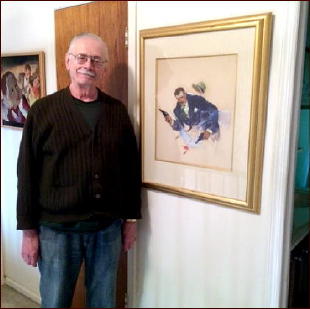
This first photo shows me standing next to my most valuable painting, the cover of Black Mask, for February 1933 by Jes Schlaikjer. Normally, I never would have been able to afford this cover painting because it’s from the classic 1930’s period of Black Mask when the covers showed stark, violent scenes with just a few images. But the seller perhaps did not realize it was a Black Mask cover by Schlaikjer. Over my shoulder is a Lyman Anderson painting for an early 1930’s issue of Alibi.
The second photo is a paperback cover painting by James Avati illustrating a scene from the novel, The Double Door, by Theodora Keogh. Avati was one of the very most influential cover artists in the paperback field, and he was widely imitated. Again, this was a painting that I normally would not be able to afford, but I bought it on credit from an art gallery in NYC.
I’ve often taken out bank loans, used my credit card, paid on the installment plan, in order to feed my art and bibliomania addiction. I’ve never regretted my decision to buy books or art. What I’ve regretted are the books and art that I did not buy!
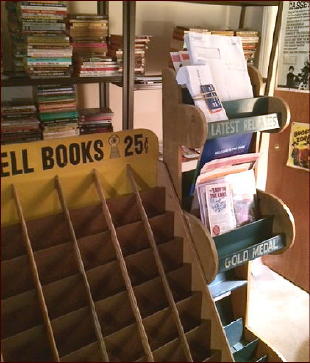
This third photo shows a corner of my mystery paperback room and part of a Dell paperback rack. For decades I hunted for paperback racks from the forties and fifties and finally found five of them at a Windy City show several years ago. They were too fragile to be shipped, and it was two years before the dealer managed to find someone driving across the country in a van to deliver them to my house.
Here below are three more photos of the mystery paperback room. I have the books shelved by alphabetical order except for my Ace Doubles and Dell Mapbacks. The Dell Mapbacks may be complete or close to it. I even found the crossword paperbacks and I wonder how they ever survived? Also pictured is my Bantam Books paperback rack which is in fine condition. The room is very crowded with books, just the way I like it!
This next photo shows two of three large western pulp cover paintings that are hanging by the stairs to the second floor. Back in the 1970’s and 1980’s it was possible to buy western, detective and adventure cover art for very low prices. The three paintings were delivered by a long time collector named Chet Woodrow, who risked driving through a terrible New Jersey snow storm to my house.
Price? A hundred dollars each. Back then I thought such prices were ridiculously low and I still think so. One funny thing about Chet was that he had the worse condition pulp collection that I’ve ever seen. The magazines looked to be in fine condition with nice covers and spines but when you tried to open them the interior pages were very brown and brittle and almost impossible to read.
The Dime Western painting below is from the 1930’s and the artist is the great Walter Baumhofer. Many years ago at an early Pulpcon, I was talking to artist Norman Saunders, and I saw a car drive into the hotel parking lot. I said excuse me to Norman and ran outside where I asked the driver who was not even out of the car if he had any pulp paintings.
He said yes and sold me this painting out of the trunk of his car for only $400. I then went back and showed Norman Saunders the painting that I just had bought in the parking lot and he couldn’t believe that I had just bought an excellent Baumhofer painting out of a car trunk.
We then spent much of the convention in the hotel bar talking about pulp art. I tried to get Norman to sell me some of his paintings, but he was leaving them in his will to his children.
The two bookcases below show part of my extensive DVD collection. I believe these are mainly film noir movies, another my addictions. The crusader painting is from a 1931 Adventure. I got it from the estate of A. A. Proctor, who was the editor of Adventure in the early 1930’s.
Above is one of my favorite pieces of art. It’s a bizarre illustration by Howard Wandrei, the brother of Donald Wandrei. Howard died an early death of alcoholism, but he was a writer of pulp fiction and a sort of outsider artist. This piece fascinates me with its complexity and strangeness. Dwayne Olson has written at least three long book articles on Howard Wandrei, but he is an unjustly forgotten, excellent artist.
The next photo shows me holding the February 1956 issue Galaxy. This is the actual magazine that I bought off the newsstand in Hoscheck’s Deli, and it so impressed me that I became the fiction magazine collector that I am today. It led to my present collection of thousands of pulps, slicks, and digest magazines.
Above is a corner of my son’s former room. For thirty-five years Joe lived with us and then a couple years ago decided to get his own place and moved out. It did not take me long to move into his room and convert it into a library and art gallery!
I have over thirty-five pieces of art in the room and eight bookcases. I think I’m now in every room of the house with art and books. All five bedrooms, the garage which I converted into a library and gallery, the basement, living room, family room. Even the bathrooms and kitchen have art. If I had room I would build another house in the back yard. The large painting is from Detective Fiction Weekly.
This is Paul Herman who has been friends with Steve Lewis and me for quite a while. He’s standing next to a western paperback cover painting.
Above is a corner of dining room with a western painting by Sam Cherry. I love western art, but many collectors seem prejudiced against westerns. They are colorful, full of action, and not as expensive as science fiction or hero art.
Below is another Dime Western painting by Walter Baumhofer showing a girl and cowboy blazing away, back to back. Art dealer Steve Kennedy owned it for many years and would never sell it, but one day he needed money, and I managed to talk him into selling it to me. I seem to remember me whining, begging, and crying. Collectors know no shame!
I’ve told this story before in my article on collecting Western Story Magazine, but the painting below amazingly enough came from my next door neighbor! What’s the odds of a non collector moving next door and having a pulp painting? Took me years to talk him into selling it to me. It’s by Walter Haskell Hinton from Western Storyin the 1930’s.
Above is a row of cover paintings. The first one is from Street & Smith Detective Story. The second one is a Spider cover which was repainted by Raphael Desoto, the original artist. The third one is by Wittmack from People’s.
Another western from one of the Popular Publication pulps. I only paid $400 for it. In the background you can see in the laundry room three of the dozen or so preliminary drawings I have framed. The artist would make a preliminary sketch and if approved would then go ahead and paint the cover. Not many of these survived, but I love them and pick them up whenever I see them. Not many art collectors care about them, but I think they are of great interest.
The next three photos show areas of my basement. The first is an almost complete set of Western Story. Of over 1250 issues, 1919-1949, I need only nine issues.
The second shows some Ace High magazines and the third photo gives an idea of a corner of the basement. The basement is about 60 feet long by 30 feet wide. I’ve filled the entire area with shelving.
In 1989 when I moved into this house I hired a contractor to turn the two car garage into a library and art gallery. These photos show some the area which I’ve filled with artwork, books, and pulps. All the neighbors asked me the same thing. “Why am I turning my garage into a library?” My response was why should I park my cars in my house? But who can understand non readers and non collectors?
More photos of my converted garage taken from different angles. You can see some of the art hanging above the pulps.
The final photo is of me and Steve Lewis. We have been friends for almost 50 years and I’ve been reading the various incarnations of Mystery*File for almost as long. Over Steve’s shoulder is a large painting from The Saturday Evening Post by Harold Von Schmidt. It’s from 1950 and illustrates a scene from a serial starring series characters Tugboat Annie and Glencannon. It was the only time they met in a story, but it has an interesting background.
The Glencannon series were comedies and the Post readers found them hilarious. During the 20 year period of 1930-1950 there were over 60 stories written by the author, Guy Gilpatric. I’ve read them all and they are among my favorite stories. They have all been reprinted in omnibus collections and there was even a British TV series back in the 1950’s.
Unfortunately there was a tragic ending to this comedy series. Gilpatric’s wife was diagnosed with terminal cancer and in a fit of depression they decided on a murder suicide pact. He shot his wife and then took his own life. Later there was a rumor or evidence that the doctors had made a mistake and made the wrong diagnosis.
I obtained the painting from an art gallery by telling the owner that I’d like to get a painting showing my favorite series character, Glencannon. I was stunned when he said he knew where one was, and it turned out to be the best one of them all, the one where Glencannon meets Tugboat Annie. Von Schmidt is a famous western artist, and I’d never be able to afford one of his paintings, but since this was a non-western the price was a lot lower.
So thanks, Steve, for taking these photos and also thanks to Sai Shanker for twice taking photos that unfortunately did not turn out as well. I love reading about the collections of other collectors and maybe this memoir on my art collection will make you decide to become an addicted, out of control bibliomaniac also! I’ve enjoyed the trip and it’s been a great ride…
Thu 30 Mar 2017
From the back cover:
“Murder at 3¢ a Day is the first and only reference volume devoted entirely to the lending-library publishers that flourished from the mid 1930s into the 1960s. More than ten years in compilation, it contains full listings of mystery and detective fiction published under such imprints as Phoenix Press, Hillman-Curl, Mystery House, Gateway, Arcadia House, Dodge, and Caslon.
“Included are dust jacket blurbs, settings, and leading characters for each title, as well as descriptions of jacket illustrations and names of the artists who designed them. Also included: an article about the lending-library trade written in 1939 by Charles S. Strong, who specialized in this type of novel; a tongue-in-cheek article on Phoenix Press mysteries by Bill Pronzini; brief biographies of many lending library writers; and selected period newspaper reviews of various titles.
“Readers and aficionados alike will find a wealth of fascinating and often amusing information about this little known variety of crime fiction. Murder at 3¢ a Day is a must for any reference shelf.”
UPDATE:
A supplement to the book can be found at www.lendinglibmystery.com/. Thanks to the collection of Bill Pronzini and his gracious generosity, this is an online compendium of all of the covers of the books included in Bill Deeck’s book, which was published by The Battered Silicon Dispatch Box Press in 2006.
Bill Pronzini is adding to his collection all the time. Here below are the covers added in the past two months, missing from earlier versions of the website. Some covers are still missing. Check through the website. If you can fill in any of the gaps, please let Bill or I know!
CLINTON BESTOR – The Corpse Came Calling (Phoenix Press, 1941)

ADELINE McELFRESH – My Heart Went Dead (Phoenix Press, 1949)

EDGAR WALLACE & ROBERT CURTIS – The Mouthpiece (Dodge, 1936)

GWYN EVANS – Satan Ltd. (Godwin, 1935)

MARK HANSOM – The Shadow on the House (Godwin, 1935)

JACK MANN – Dead Man’s Chest (Godwin, 1935)

DONALD STUART – The White Friar (Godwin, 1935)

ANTHONY GILBERT – She Vanished in the Dawn (Mystery Houise, 1941)

ANNE TEDLOCK BROOKS – Undertow (Arcadia House, 1943)

Thu 8 Sep 2016
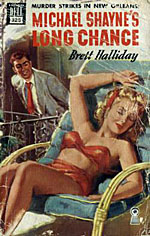
BRETT HALLIDAY – Michael Shayne’s Long Chance. Dodd Mead, hardcover, 1944. Reprinted in paperback many times, including Dell #325, mapback edition. 1949; Dell #866, 1956; Dell D416, 1961, McGinnis cover. (All three shown.)
When the death of Mike Shayne’s wife Phyllis has him packing up shop in Miami, and ready to call it quits with his career as a private detective, his old buddy, reporter Tim Rourke, with a nose for news and an eye for a friend in trouble, starts him back on the right track with a job that takes him back to the old stomping grounds he was once run out of, New Orleans.
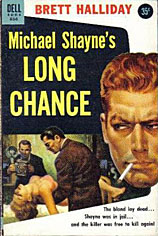
And there, besides a nice girl or two to help chase away the blues, he finds himself hip-deep in a case of murder, complicated by police corruption and the dope-peddling racket in a city where life can be loose and easy and more.
Shayne leads more with his head than he should, but he survives a long night of beatings, doped drinks and a rigged picture frame to pull off a decent bit of surprise trickery to nab the killer. The early Shayne novels were not far removed from the the glory pages of Black Mask magazine, and this tale, no exception, goes down as smoothly as a bottle of Monet cognac.
Rating: B
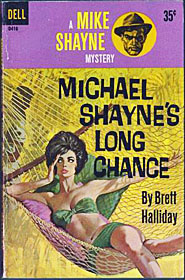
Wed 6 May 2015
Three years ago I discussed the Frank Robinson Collection auction which was organized by Adventure House. The biggest lot at that auction was the complete Weird Tales collection which sold for a quarter of a million dollars. Yes, that’s right, as in $250,000.00. Then we fast forward 3 years and again Adventure House held an auction for a complete collection of Weird Tales, only this time the set got zero bids. I believe a discussion of this auction will show not only what occurred and why one set sold and another set did not sell, but also we will learn how pulp collectors have changed over the years.
As with the Frank Robinson auction, this recent auction which was held on May 1, 2015, also did not generate much comment on the various discussion groups that I visit online. I know as a long time fiction magazine collector, I certainly want to talk about such subjects, in fact I’m starved for conversation and I guess that’s one of the reasons that I continue to post my pulp collecting memoirs. People have been collecting pulps for over a hundred years now, ever since the first one was published in 1896. I’ve been at it for over 50 years and I feel it’s important enough for us to continue posting articles and commenting about what happened during the time these fiction magazines ruled the newsstands.
I also feel it’s very important that we continue to support the two major pulp conventions, Windy City and Pulpfest. I’ve attended both over the years and have had many interesting conversations about the pulp era. At Windy City in April I had the opportunity to view the Weird Tales set which was on display behind the Adventure House tables. I also eagerly bought the $10.00 Weird Tales collection auction catalog. Published by Adventure House this is a 40 page full color description of the 274 issues. True, only 239 covers are shown but all are listed by condition in the back of the catalog. In addition to the 274 issues published during 1923-1954, the catalog also lists the 79 issues of the revived Weird Tales that were published during Summer 1973 to Spring 2014.
So this was a major auction of perhaps the most talked about, most famous pulp title of them all. It was advertised on the Adventure House website, emails were sent out announcing the auction, and a full color catalog was available for only 10 dollars. Why was it a flop? Why no bids?
Well, of course the most obvious reason is the fact that the minimum bid was set at $60,000. But if the Robinson WT set of three years ago sold for 250,000 dollars, how come this recent set could not attract $60,000? Well you know the old saying in real estate: location, location, location. In the pulp and book world, it’s: condition, condition, condition.
The Robinson collection was almost perfect. White pages, newsstand fresh covers, complete spines. Weird Tales was called “The Unique Magazine”. Well, the Robinson set was truly “unique”, definitely the best condition set of Weird Tales in existence. It could and did command a premium price.
So what was wrong with the set offered up for auction in May 2015? What prevented it from even getting one bid at the $60,000 minimum? The catalog described several good points such as blood red spines(they usually are faded), high quality paper, and custom made tray cases to hold each volume. When I viewed the set myself at the convention, I was impressed by all of the above. Unfortunately the following faults have to be mentioned:
1. The first 45 issues, March 1923 through June 1927 are bound in 10 blue volumes. Personally, I think using blue was a mistake. I have a set bound in red and it looks more impressive. But this is just a personal preference. The main problem with bound pulps is simply that many collectors won’t touch them at all. And those that will accept bound copies want a significant decrease in the usual price.
In the first paragraph I mentioned how pulp collectors had changed over the years, and this is one example. It used to be that old time collectors, guys who actually bought the magazines off the newsstands, loved to have their pulps bound. It gave them a look of respectability and the garish magazines looked more like a sedate book that they could proudly display on their bookshelves without being sneered at by other collectors and even non-collectors. Pulp collectors nowadays don’t think like this at all. They want the individual issues and they don’t like them bound.
2. Because they are bound these first 45 issues, which are very rare and expensive, only rate a good or good minus as far as condition.
3. Most issues in the early 1930’s have Scotch tape or clear tape on the head and foot of the spines. This was another practice that many of the old time collectors followed. I’ve seen pulps ruined with masking tape, discolored scotch tape, and even electrical tape. One guy even used stamps to close tears in the cover. Pulp collectors back then evidently thought nothing of closing and repairing tears with all sorts of tape. Now of course collectors frown on the use of tape.
4. The tray cases are a very good idea and look nice. Unfortunately several of the cases show water damage.
In my opinion, the above points prevented a high minimum bid and certainly explain why no one started off bidding at the $60,000 level. It’s too high a figure for a set in this condition. Perhaps a lower figure would have encouraged some beginning action and the final bidding might even have reached a high level. Perhaps a minimum bid of $20,000 would have been better but then again, you run the chance of the set going for such a figure and I guess the seller would consider that unacceptable.
I used to have a set of Weird Tales for many years but that was back in the days when you could buy issues for $5.00 each. Back in 1968, when I was discharged from the army, I had two big goals in my life: to get a complete set of Black Mask and a set of Weird Tales . I managed to do both within a few years. Since then I’ve seen many extensive runs of WT and I’m not even sure that it’s that rare. It seems that everybody, like many SF collectors, saved their copies! It’s really a pretty magazine, a thing of beauty.
My present set is not complete because I no longer care about the early issues of 1923-1925, most of which I find not that readable. My present set is a bound set from 1926-1954. I’ll tell the story about this set and it will illustrate the differences between the old time pulp collectors and the newer pulp collectors who never really bought any of the magazines off the newsstands.
In the 1980’s, Harry Noble, who had been buying pulps since the early 1930’s, decided to put together some bound sets of his favorite SF and fantasy magazines. He did this with such titles as Astounding, Famous Fantastic Mysteries, Fantastic Novels, Unknown Worlds, and of course, Weird Tales . He had trouble finding an inexpensive binder but finally found someone who would bind several magazines into one volume for a low price. Harry didn’t really care about the early issues, not only because they were not that readable, but also because they were too expensive for him to buy. But 1926-1954 he could handle and he started to his project one volume at time.
But some of his issues were coverless and he borrowed copies from my set of individual issues and made color Xerox copies of the covers. There were at least a dozen, maybe more issues that were bound with Xerox covers. As a second generation pulp collector, I tried to talk Harry out of binding the pulps. Some of the issues were in really nice shape and it was a shame to see them bound with trimmed edges. But Harry was from the first generation of collectors and he liked the look of the bound volumes.
Harry worked on this project for almost 20 years, up until his death at age 88 in 2006. He had prior warning that his illness was terminal and at the 2006 Pulpcon he told me and several other friends that he was dying. He welcomed us to visit his house and buy his extensive collection of pulps, books, and vintage paperbacks. Which we did. I made four such trips buying his sets of Western Story, Astounding, Short Stories and other items.
One day, at dinner at my house, a group of us were having dinner and the subject of the Weird Tales set came up. Harry said he wanted $10,000 for the bound in red years of 1926-1954. I pointed out that not only were the most expensive issues missing, but the set was bound which was a problem as far as value was concerned. Also I knew from personal experience that at least a dozen issues had Xerox color covers. I also remembered that there were a few other issues with pieces missing out of the covers.
However, I said I was willing to pay $5,000 considering the flaws, etc. Another well known, veteran collector also said he thought it might be worth $5,000 but no more. To tell you the truth, I wasn’t even sure it was worth the 5 grand. Harry, who loved bound sets, was justifiably upset of course. In fact, he said he would throw them in the dumpster before selling them for $5,000. One of our friends got a laugh by saying to tell him which dumpster because he would be there.
I figured that was that but a couple weeks later, I got a call from Harry. He had tried several other collectors and bookstores and no one would pay the $10,000. I’m pretty sure they would not even have paid the $5,000. Harry said if I still wanted them I could have the set for $5,000 and I accepted. He didn’t last much longer and died in December of 2006. So ended a 40 year friendship.
But I still have Harry’s bound set and it looks beautiful bound in red in the master bedroom. But I’d still rather have them unbound!
Editorial Note: This video produced by Adventure House of the Weird Tales collection they were offering may not stay online for long, but at least for now, it is still up:
Sat 17 Jan 2015
An inquiry from Bill Bickley:
Hello- I’m trying to identify what book the painting I purchased recently was used on…any ideas?? I thought it was a Mack Bolan or Nick Carter but have gone through most of those covers online to no avail. Do you know or perhaps know someone who has an encyclopedic knowledge of these types of books you can show or post this for others to see and offer opinions/answers?? Thanks!